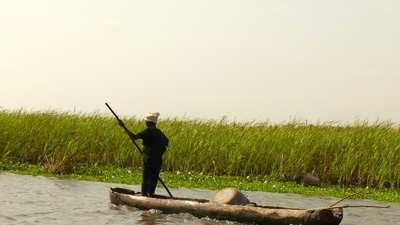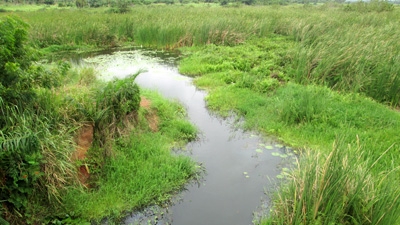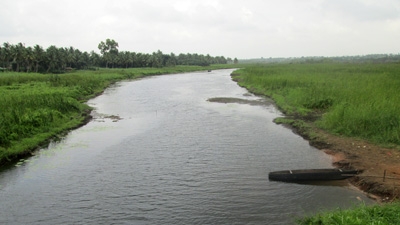Women as agents of change
Women played a particularly active role and their contribution to the revitalization of the canal was critical. “You should have seen us women as we pulled on pants and dived into that mud to dredge this canal in order to get the result that you are looking at now,” says Abalo Sodohoin, with a satisfied smile. Ms. Sodohoin is the chair of the canal management committee, an organization established to ensure the maintenance of the canal. Thirteen of the seventeen members of the organization are women.
After four months of grueling labor, the village residents dredged an area measuring roughly 5 km long and 40 m wide to open up the canal bed. “People who had to abandon their homes because of flooding were able to return. This effort helped rally villagers around a common goal— that of reviving economic activities and improving residents’ living conditions,” notes Amidou Morou, the IDLM project coordinator.
Now that the canal has been rehabilitated, economic development can resume. “This large-scale project gave us the tools we needed to combat poverty in our community. Fishing activities have resumed and sugar cane producers along the canal now have more arable land,” explains Claude Anani, a volunteer teacher and vice chair of the Village Development Committee.
“The scale of the work accomplished manually by Boko’s residents is simply tremendous!” adds Koffi Hounkpè, World Bank Co-Task Team Leader for the IDLM project. “However, a major challenge remains; keeping the canal open by preventing the regrowth of invasive plants. Adequate support is needed to enable the canal maintenance committee to undertake this task,” he notes.
Dredging the canal is just the first stage of a long process to rehabilitate the lake. The IDLM project provided pirogues and established a core fund totaling CFAF 1 million or approximately $2,100, to contribute to the VDC’s fund and finance necessary maintenance works and income-generating community activities.
Boko’s residents are more determined than ever to maintain the canal. Once a week, residents volunteer to pull out water hyacinths, an invasive plant species that drains oxygen from the lake, or to remove silt buildup.
While support from the IDLM project has helped restore a section of the canal, the lakeside residents are already dreaming of the day when the entire canal will once again be navigable. The IDLM project has already submitted an additional request for financing for this initiative.
If their dream comes true, Lake Boko will once again be a major trading hub reminiscent of the period when traders from neighboring countries plied this canal to bring their products to local markets.
[i] Financing for this World Bank-administered project amounting to US$17 million (approximately CFAF 8 billion) is provided by the Global Facility for Disaster Risk Reduction and Recovery (GFDRR), the regional sustainable land management program “TerrAfrica,” and the Global Environment Facility (GEF).



